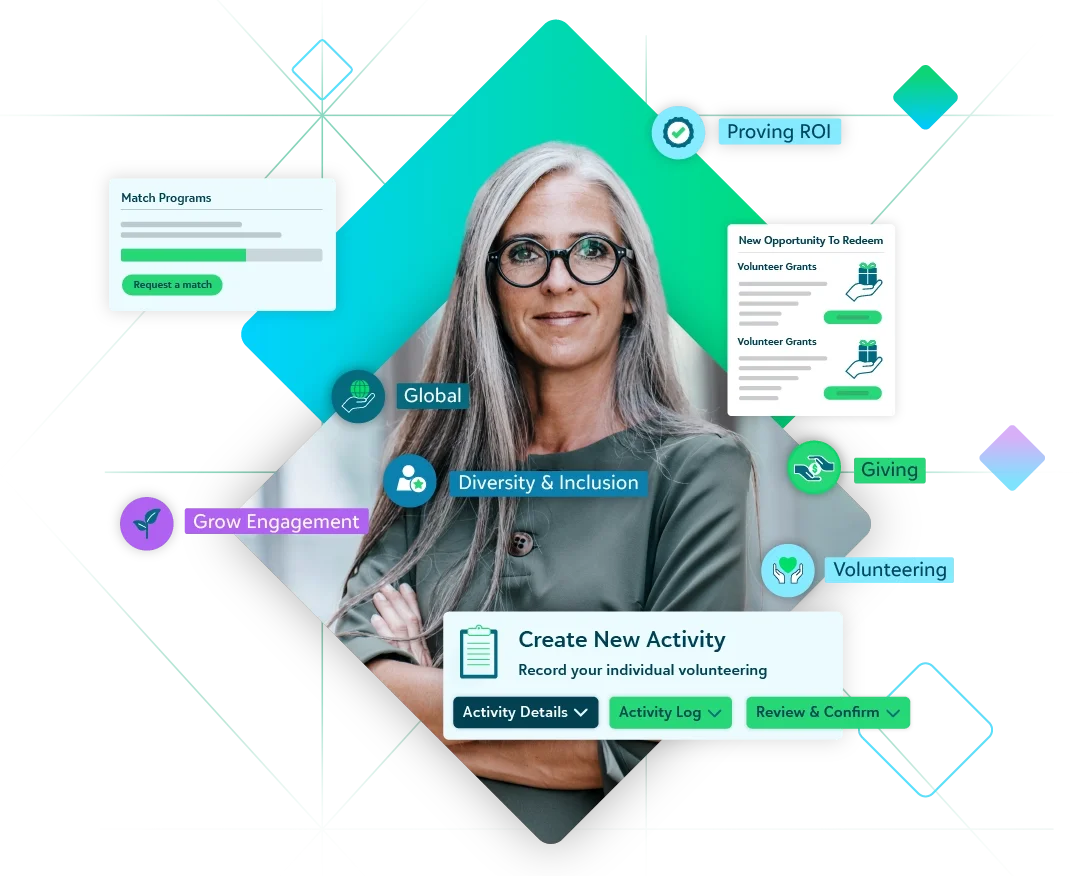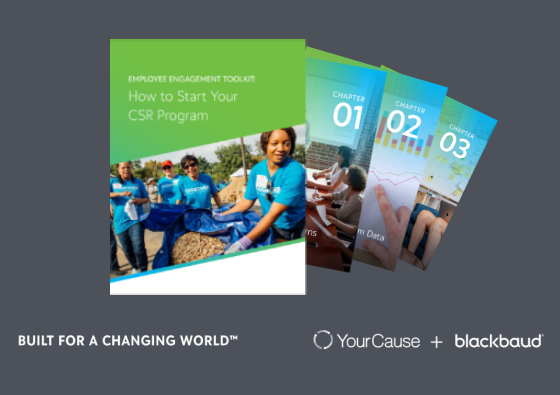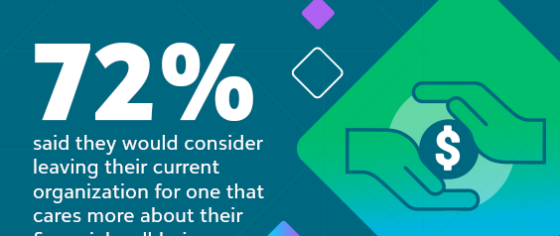CSR Strategy Development & Implementation Tips
Corporate Social Responsibility

Use these links to jump to a section on this page.
What is Corporate Social Responsibility?
Corporate social responsibility follows the belief that in order to have long-term success companies need to build and maintain successful relationships with a wide range of stakeholders including their partners, consumers, employees, the community they operate in, and their governments. There are several reasons why companies large and small develop socially responsible initiatives. The world is facing unprecedented challenges connected with environmental issues, social justice and economic prosperity. People are paying attention to a company’s support of their employees, their community and their customers. Companies provide that support and respond to the needs of their stakeholders through social responsibility.
“Regardless of which strategy you choose, the most important part is preparation. Strategies cannot be created overnight. If you think CSR is something you want, the time to start making connections and planning is now.”
Getting started with CSR
We get it. Starting a corporate social responsibility program can feel overwhelming. There are probably hundreds of ideas swimming through your head and in a perfect world, or on any other team, you could just start the ideal program format and run with it. But CSR is a little different.
A successful program requires buy-in from key stakeholders. It requires data analysis, strategy, finding the right partners, and even if all of that gets pulled together, your company’s employee engagement might not reach the levels you expect (or desire) at first. So what is a practitioner new to CSR supposed to do?
Building the Business Case
Determine your Goals and Start with the Big Picture
Many executives are aware of the benefits that CSR programs offer a corporation. But sometimes, our leadership teams may need a reminder. CSR increases employee engagement, productivity, and retention. Happy and engaged employees produce better business results than those who aren’t engaged.
Social Responsibility also yields increased consumer support and a better company reputation. Both of those things affect the company bottom line positively. Linking CSR business goals and your company’s bigger picture helps executives understand the need based on what is important to them: making money!
Don’t worry, this isn’t a bad thing. After all, if your company didn’t make money, there wouldn’t be a CSR program to engage!
Benefits of CSR
We’ve compiled the latest CSR statistics around return on investment, consumer, investor, employee, and executive beliefs. This data is meant to help companies of all sizes see the benefits of investing in CSR.


+20%
CSR programs have shown to increase revenue up to 20%– *Project ROI CSR Report
85%
of individual investors are interested in sustainable investing, up 10% from 2017 – *Morgan Stanley
78%
of people want to work for a company that leads with purpose- *Porter Novelli 2021 Purpose Perception Study
77%
of consumers say they are more willing to purchase from a company with ESG & CSR commitments – *Blackbaud Institute
Designing and Growing your CSR Programs
We cannot stress enough the importance of creating a program that aligns with your company’s values. Before even jumping into CSR ideas or strategies, consider the bigger picture. Identifying corporate vision, values, and philosophies pertaining to CSR now will allow you to align policies, strategies, and even your future software solutions later. We have a lot of content on how to get started and improve employee engagement programs that we have developed over the years. The following blogs were designed to help you get started.
Toolkit
Corporate Social Responsibility Toolkit
This toolkit provides resources for starting a CSR program and expanding a program globally.

Driving Employee Engagement
3 Important Things to Remember: The silver lining to employee engagement
Anyone involved in Employee Engagement knows that it impacts profitability, productivity, customer experience, and employee retention. Marketing Communications, Public Relations, CSR, Human Resources, and Business Lines, join together for Employee Engagement and develop your internal pop-up groups, task forces, response teams to determine how to best coordinate, reach, and engage your colleagues.
- Employees want to be engaged with work and their colleagues.
- Employees want to give to the causes they believe in and make a positive impact on their community.
- Offering virtual, digital, or responsible in-person volunteer opportunities are necessary.
Promoting Employee Wellness
According to Sharehold’s report Redesigning Belonging, employees who feel a high sense of belonging in their organization are 18 times more likely to receive promotions and take 75% fewer sick days than employees who feel unseen or unaccepted by their corporation. Providing employees the opportunity for community outreach benefits their wellness and the communities they are serving, while making them feel more united and supported by their company. Gone are the CSR programs focused solely on giving campaigns or matching gifts.
Providing Employee Relief Grants
Companies active in the CSR space are generally very familiar with the concept of disaster relief. They create campaigns and devote time, energy, and funds in targeted efforts to help those in need following a disaster. And from research, we know that Disaster Relief campaigns are a powerful way to engage employees. This post is a guide that reviews program structure, third-party disaster relief funds, the donation process and resources.
Virtual Engagement
Even before the global pandemic, technology has been a leading method of engaging employees. Remote work grew to be the norm during the pandemic and many of those companies are continuing to employ a hybrid or fully remote workforce. The challenge – how do companies create meaningful volunteer opportunities for their remote and global employees that engage, connect and create impact? Check out this round-up of virtual engagement resources. We’ll continue to curate and add ideas for engaging all of your employees.
Incorporating DEI
Diversity Equity and Inclusion Through a CSR Lens
Diversity and Inclusion strategies have many elements, but at their core, are about creating a workplace where everyone feels encouraged to bring their whole selves to work, where uniqueness is recognized and valued, and where advancements are based on an individual’s accomplishments. Diversity and Inclusion creates a fully engaged group of employees and a company-wide culture people want to be a part of.
One of the most powerful ways to engage employees is to allow them to self-identify through an Employee Resource Group (ERGs). These groups are a safe space to recount shared experiences, to learn together, and to advance professional development in a more personalized way.
Diversity and Inclusion Webinar Series
In the wake of major social changes, leading companies are taking steps to increase diversity, equity and inclusion. Toggle to see the description for each webinar in the series.
-
Pioneer Natural Resources Public Affairs Specialist, Anna Leigh Navarro, joins the Diversity and Inclusion series to discuss her team’s recent work on delivering inclusive resources for employees to combat stigma of different abilities and mental health. She will share ways Pioneer is working to enable open dialogue between employees and managers to address needs and offer strategies her team has used to help make mental health and disability awareness more acceptable in the day-to-day business world.
-
In this session, we will explore some of the barriers that prevent organizations from successfully launching robust Diversity, Inclusion, and Equity programs. Once those barriers are identified we will discuss 10 rules of engagement that organizations can implement to create safe spaces for open dialogue in the workplace. We will conclude with a Q&A session and a departing quote.
-
McAfee’s Program Manager, Joseph Baldonado shares about the corporation’s CSR strategy around Connect, Thrive, and Ignite, and how McAfee’s different Culture Clubs, ERGs, and Communities help the company’s mission of recruiting and retaining a diverse workforce ignites change in their industry and communities. McAfee is extremely transparent around the gender and racial makeup of its workforce and is making strategic and concerted efforts to hire more women and people of color into their workforce.
-
More than ever, corporations are being held accountable by their employees and the public to address how they support Diversity and Inclusion (D&I) and Civic action. These topics require mindfulness and consideration to ensure the utmost impact is made through corporate initiatives. Join Odessa Jenkins as she hosts three corporate industry leaders for an open discussion surrounding how corporations should be and are responding in genuine efforts to support D&I and civic action.
Global Considerations
Culture and International Interests
Different countries have different understandings of philanthropy and who should be responsible for taking care of social issues locally and globally. For instance, in some countries, the government is solely responsible for creating programs. The key is to know what the culture is in each country you have employees in so your program can adapt and mesh to fit each and every employee.
When working on a global-scale CSR program, you will also have to consider the interests of your international employees. If it is important that all employees in your company, regardless of location, engage with the same focus area that your organization has chosen to highlight, those may not match the interests or causes of available and global vetted nonprofits in your employees areas. Completing proper vetting and research ensures opportunities are available before asking your employees to engage.
Barriers and Launch Considerations
You may stumble upon a few language barriers within your corporation. With thousands of languages spoken throughout the world, this is a very common setback. Understand the preferred languages within each location and make sure your message is either translated or you have someone that will translate it for you into the appropriate tongue. It is important that these messages come across in the way they were intended, no matter the language they’re heard in. Relying on ambassadors to ensure that the translation is made successfully can mitigate that risk. If you really want your global employees to know you have taken them into consideration, converting things such as time zones, currencies and miles into kilometers is a thoughtful way of relating to their world.
A common question asked by global organizations is should we launch one location at a time, the whole company together, etc.? And the answer to that is every company differs, however many have found that the benefits of a tiered launch mean that you can work out the kinks on a smaller scale, finalize messaging and ensure the program is well received before rolling it out globally.
Aligning to the SDGs | Measuring Impact
The corporate philanthropic community has bee working hard to make an impact on the UN Sustainable Development Goals. There are many resources that can be leveraged by CSR professional interested in aligning organization goals to supporting the SDGs. The 2019 PwC reporting challenge shows 72% of companies evaluated mention the SDGs in their reports and 25% of companies include the SDGs in their published business strategy.

